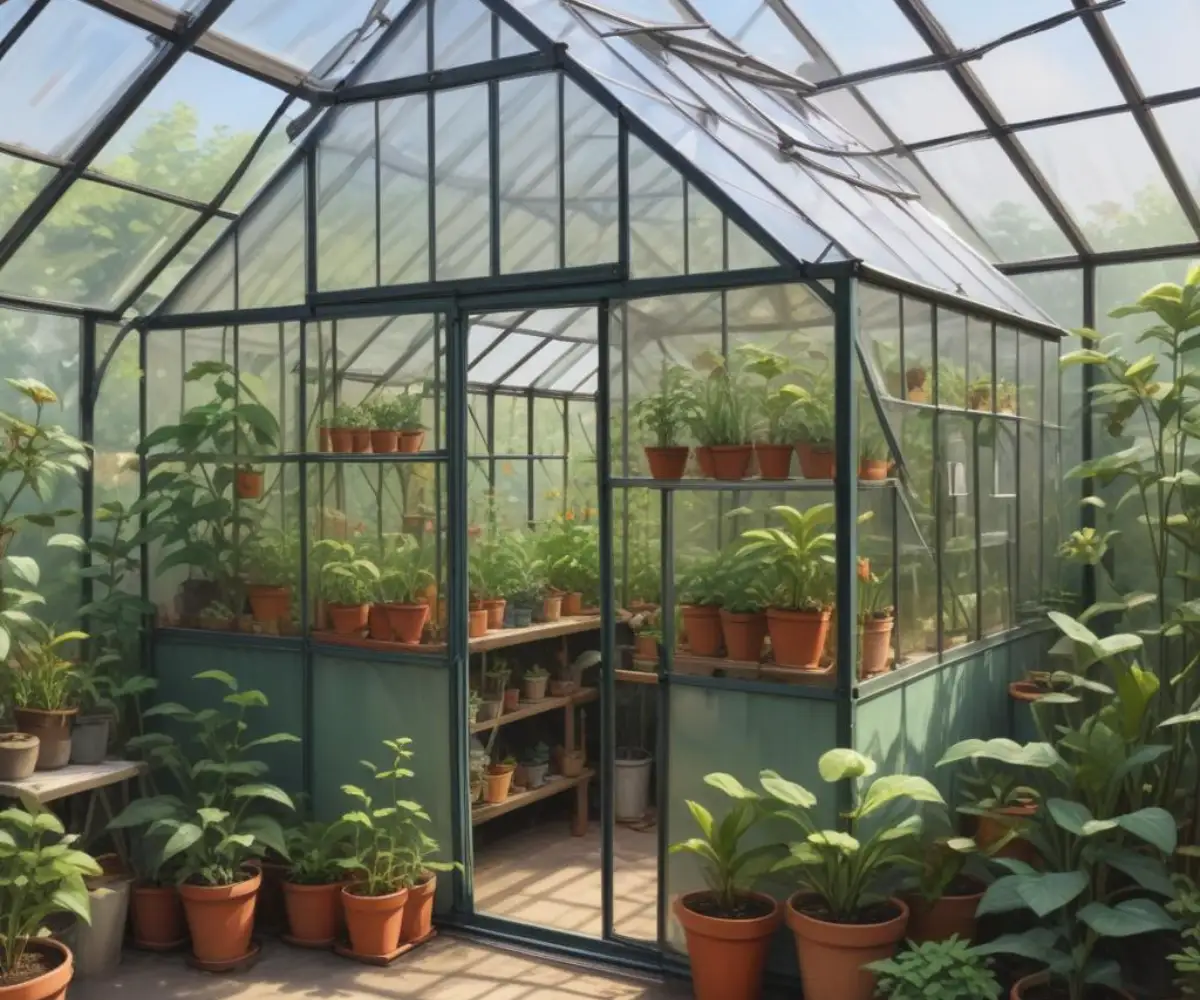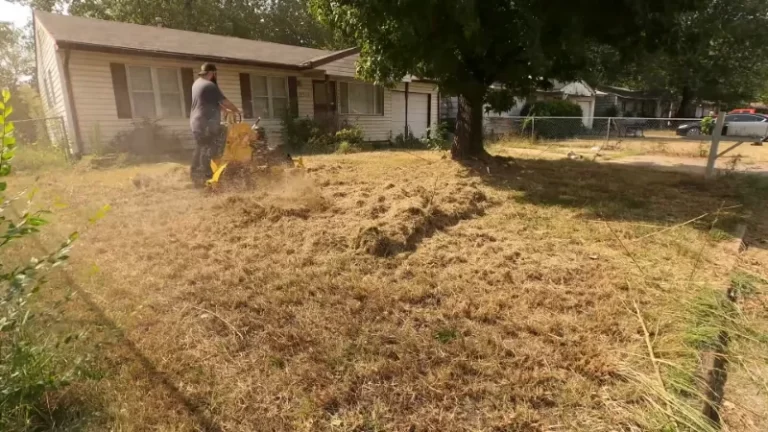Turn Your Metal Shed Into a Greenhouse: A DIY Dream?
That old metal shed in the corner of your yard—it’s sturdy, it’s there, but is it doing anything more than housing forgotten tools and spiders? Many gardeners dream of a greenhouse for year-round planting but are put off by the high cost of brand-new kits. This leaves them staring at their underutilized shed, wondering if a transformation is possible.
The core problem is that a standard metal shed is the opposite of a greenhouse; it’s dark, prone to overheating, and lacks the airflow plants need to thrive. Converting it seems like a daunting task riddled with potential pitfalls. However, with the right plan and materials, that metal box can become a thriving, light-filled sanctuary for your plants.
You'll Learn About
Why a Metal Shed Is a Surprisingly Good Starting Point
Before diving into the “how,” let’s appreciate the “why.” A metal shed offers a fantastic foundation for a greenhouse conversion. Its inherent strength and durability mean you’re not starting from scratch, which can save a significant amount of money compared to purchasing a new structure.
The rigid frame of a metal shed is perfectly suited to support the modifications needed, such as adding transparent panels and ventilation systems. You are essentially repurposing a robust skeleton, which is a major head start in your DIY journey. This project is a cost-effective and sustainable way to achieve your gardening goals.
The 5 Biggest Challenges You’ll Face (and How to Solve Them)
Transforming a metal shed isn’t without its hurdles. Metal is great for structure but terrible for light transmission and temperature regulation. Understanding these challenges upfront is the key to a successful project.
Challenge 1: Letting in the Light
The Problem: The most obvious issue is that metal walls and roofs block 100% of sunlight, which is essential for plant growth. Your primary task is to replace large sections of this opaque material with a transparent or translucent alternative.
The Solution: You will need to carefully remove sections of the metal siding and roofing and replace them with glazing materials. Polycarbonate panels are the most popular choice for this because they are lightweight, durable, and provide excellent UV protection. You’ll cut panels to size and fasten them to the shed’s existing frame, instantly transforming its purpose from storage to cultivation.
Challenge 2: Beating the Heat (Ventilation)
The Problem: A sealed metal structure, even with clear panels, will become an oven on a sunny day. Without proper airflow, temperatures can soar to levels that will quickly kill your plants. Good ventilation is non-negotiable.
The Solution: Installing vents is crucial for regulating temperature and humidity. Add vents at both high and low points of the shed to create natural convection; hot air will escape from the top vents while cooler air is drawn in through the bottom. Consider installing roof vents, louvered windows on the walls, or even an exhaust fan for more active air circulation.
Challenge 3: Keeping it Warm (Insulation & Heating)
The Problem: While metal sheds can get too hot, they also lose heat rapidly when the sun goes down. To extend your growing season into the colder months, you’ll need to trap some of that daytime warmth.
The Solution: Insulate the parts of the shed that you don’t convert to transparent panels, especially the north-facing wall, which receives the least sunlight. You can use rigid foam board insulation or reflective bubble wrap. For year-round growing in colder climates, you may need to add a small electric or propane heater, concepts of which tie into understanding how does indirect sunlight heat a room through passive solar gain.
Challenge 4: The Foundation and Floor
The Problem: A standard shed floor, whether it’s wood or just dirt, might not be suitable for a greenhouse. You’ll be working with water, soil, and changing humidity levels, so you need a floor that allows for good drainage and can withstand moisture.
The Solution: If your shed has a wooden floor, it’s best to remove it to prevent rot. A floor of gravel or pavers is an excellent choice for a greenhouse because it provides excellent drainage and helps prevent weed growth. A concrete floor can also work, but make sure it has a built-in drain.
Challenge 5: Interior Setup for Plants
The Problem: An empty shed is a blank canvas, but an inefficiently used one is a waste of space. To maximize your growing area, you need to think vertically and organize your layout effectively.
The Solution: Install sturdy shelves and benches along the walls. This not only maximizes your growing space but also keeps plants off the ground, improving air circulation and making them easier to tend to. A dedicated potting bench will also make your gardening tasks much more convenient.

Step-by-Step: Your Metal Shed to Greenhouse Conversion Plan
Ready to get your hands dirty? This step-by-step guide will walk you through the entire process, from initial planning to final setup. Remember to check local regulations before you begin, as some modifications may require a permit.
Step 1: Planning and Preparation
First, thoroughly inspect your shed. Check for any rust, leaks, or structural weaknesses that need to be repaired. Decide which walls and roof sections will be replaced with transparent panels—typically the south and east-facing sides are best for maximizing sunlight. Create a detailed plan and a list of all the materials you’ll need.
Step 2: Deconstruction – Removing Old Panels
Carefully remove the existing metal roofing and siding from the designated sections. This is a critical step in opening up the space to sunlight. Be methodical and gentle to preserve the underlying frame. Always wear safety glasses and gloves during this process.
Step 3: Reinforcing the Frame (If Necessary)
Once the panels are off, assess the shed’s frame. The metal panels provide some rigidity, so removing them might weaken the structure slightly. If it feels flimsy, you can add wooden or metal bracing to reinforce it. When selecting wood for benches or reinforcement, understanding material thickness is key; for example, you might compare options like in this guide on plywood differences.
Step 4: Installing Glazing Panels
This is where the shed truly starts to transform into a greenhouse. Cut your polycarbonate panels to fit the openings in your frame. Pre-drill holes for screws to avoid cracking the panels. Secure them to the frame using gasketed screws designed for roofing to create a watertight seal.
Step 5: Sealing and Waterproofing
Go over every seam and connection point to ensure your new greenhouse is completely waterproof and airtight. Use weather stripping around doors and windows and apply a quality silicone caulk to seal the edges of your new panels. This prevents heat loss and stops pests from getting inside.
Step 6: Ventilation is Non-Negotiable
Install your chosen ventilation system. This could be as simple as adding manually operated louvered windows to the walls or as complex as a thermostatically controlled exhaust fan. A combination of a roof vent and lower wall vents is a highly effective setup for passive air circulation.
Step 7: Insulation and Flooring
Line the remaining solid walls with your chosen insulation material. On the floor, lay down a weed barrier fabric first, then cover it with a few inches of gravel or install pavers. This ensures excellent drainage and a clean, stable surface to work on.
Step 8: Setting Up the Interior
Now for the fun part! Build and install your benches, shelves, and any other interior features. Consider running a water line or setting up a rain barrel system for convenient watering. Organize your space to suit your specific gardening needs.
Choosing the Right Materials: A Comparison
The materials you choose will have a major impact on the success and longevity of your project. The most critical decision is the glazing—the transparent material that will let the light in.
Glazing, Insulation, and Flooring Choices
Each material comes with its own set of pros and cons related to cost, durability, and performance. Polycarbonate is often the top choice for DIY conversions due to its balance of strength, light transmission, and affordability.
Maintaining the clarity of these panels is also important. For tips on keeping surfaces clear and protected, you might find some relevant ideas in reviews of products like shower glass protective coatings, which focus on preventing buildup and maintaining transparency.
| Material | Pros | Cons | Best For |
|---|---|---|---|
| Polycarbonate Panels | Highly durable, excellent insulation (especially twin-wall), lightweight, UV resistant. | More expensive than film, can be scratched. | Almost all climates; the best all-around choice for durability and insulation. |
| Greenhouse Film (Polyethylene) | Very affordable, easy to install, excellent light diffusion. | Not very durable (needs replacement every few years), poor insulation. | Budget-conscious projects and milder climates. |
| Glass | Excellent light transmission, very long lifespan, aesthetically pleasing. | Heavy, fragile, expensive, and difficult to install. Poor insulation unless double-paned. | Permanent, high-end conversions where aesthetics are a top priority. |
Essential Accessories for Your New Greenhouse
Once the structure is complete, a few key accessories can elevate your converted shed from a basic shelter to a high-performance growing environment. These additions help automate and optimize the conditions for your plants.
Consider installing automated vent openers that use wax-filled cylinders to open and close vents based on temperature, ensuring your greenhouse never overheats when you’re not around. For intense summer sun, a shade cloth can be draped over the structure to prevent plants from getting scorched. Finally, a simple drip irrigation system can save you hours of hand-watering and provide consistent moisture to your plants.
Common Mistakes to Avoid
Many well-intentioned conversion projects fail due to a few common, avoidable errors. Being aware of these potential pitfalls can save you time, money, and frustration.
The most frequent mistake is underestimating the need for ventilation. A stuffy, humid environment is a breeding ground for pests and diseases. Another common issue is ignoring the foundation, leading to drainage problems and an unstable structure. Lastly, don’t choose the cheapest glazing material without considering your climate; a thin plastic film won’t provide enough protection for year-round gardening in a cold region.
Your DIY Greenhouse Awaits
Converting a metal shed into a greenhouse is a challenging but incredibly rewarding project. It’s a sustainable, cost-effective way to create a dedicated space for your passion for gardening. By tackling the core challenges of light, ventilation, and temperature control head-on, you can successfully repurpose that old shed into a productive green haven.
With careful planning and the right materials, you can extend your growing season, experiment with new plants, and enjoy the satisfaction of having built a functional and beautiful space with your own hands. The dream of a year-round garden is closer than you think—it might just be hiding in your own backyard.

